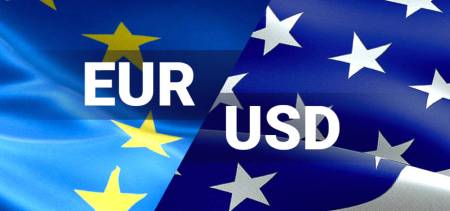
The relationship between the EUR/USD currency pair and the strength of the U.S. dollar is one of the most closely monitored correlations in the forex market. Given that the EUR/USD is the most traded currency pair globally, its movements provide key insights into the broader strength or weakness of the U.S. dollar.
Understanding the Inverse Correlation
The EUR/USD currency pair represents the exchange rate between the euro and the U.S. dollar. Since the U.S. dollar is the quote currency in this pair, its movements are inversely correlated with the strength of the dollar. This means:
- When the U.S. dollar strengthens, EUR/USD typically declines, as fewer dollars are needed to purchase one euro.
- When the U.S. dollar weakens, EUR/USD typically rises, as more dollars are required to exchange for a euro.
This inverse relationship exists because currency exchange rates are always relative, meaning the appreciation of one currency implies the depreciation of another within the pair.
Factors Affecting EUR/USD and Dollar Strength
Several macroeconomic and geopolitical factors influence both EUR/USD and the overall strength of the U.S. dollar:
1. Interest Rate Differentials
The policies of the U.S. Federal Reserve (Fed) and the European Central Bank (ECB) play a crucial role in the valuation of both currencies. When the Fed raises interest rates, the dollar typically strengthens due to increased capital inflows seeking higher returns. Conversely, when the ECB adopts a more hawkish stance, the euro strengthens, pushing EUR/USD higher.
2. Economic Data and Growth Outlook
Key economic indicators such as GDP growth, employment reports, inflation, and consumer sentiment influence the relative strength of the dollar and the euro. A strong U.S. economic performance tends to boost the dollar and push EUR/USD lower, while weak data can lead to a weaker dollar and a higher EUR/USD rate.
3. Market Sentiment and Risk Appetite
In times of global uncertainty, investors tend to flock to safe-haven assets, including the U.S. dollar. This flight to safety can lead to a stronger dollar and a declining EUR/USD pair. Conversely, during periods of economic stability and risk-on sentiment, the euro may appreciate as investors seek higher-yielding assets in Europe.
4. Trade Balances and Capital Flows
The U.S. and European trade balances can impact currency valuations. A widening U.S. trade deficit may weaken the dollar, leading to a higher EUR/USD, while a strong European export market may bolster the euro.
5. Geopolitical Events
Political instability, global trade tensions, and central bank policies can all drive fluctuations in EUR/USD. Events such as Brexit, U.S. elections, and changes in fiscal policies can create volatility and shift the balance between the euro and the dollar.
How Traders Utilize This Correlation
Forex traders monitor the correlation between EUR/USD and dollar strength to make informed trading decisions. For example:
- Dollar Index (DXY): Many traders use the U.S. Dollar Index (DXY), which measures the dollar’s strength against a basket of currencies (including the euro), to gauge potential movements in EUR/USD.
- Divergence Strategies: Traders look for discrepancies between EUR/USD price action and U.S. economic data to anticipate potential reversals.
- Hedging and Portfolio Diversification: Investors holding assets denominated in U.S. dollars may use EUR/USD as a hedge against currency fluctuations.
Conclusion
The EUR/USD currency pair is highly sensitive to the strength of the U.S. dollar, and its inverse correlation provides valuable insights for traders and investors. By understanding the factors that drive this relationship, market participants can better anticipate price movements and make more strategic forex trading decisions. Whether through interest rate differentials, economic performance, or market sentiment, the interplay between the euro and the U.S. dollar remains a fundamental aspect of the global financial markets.
